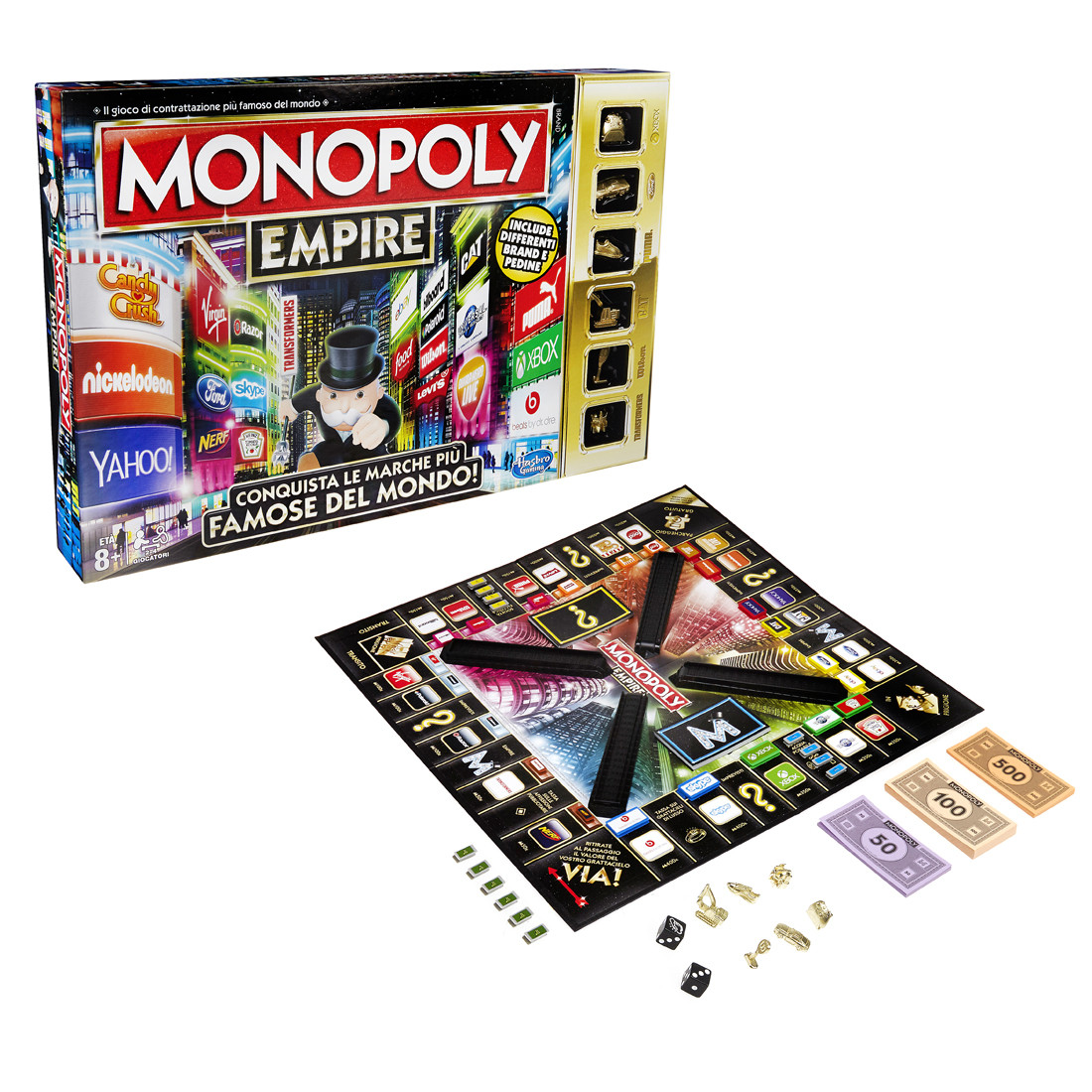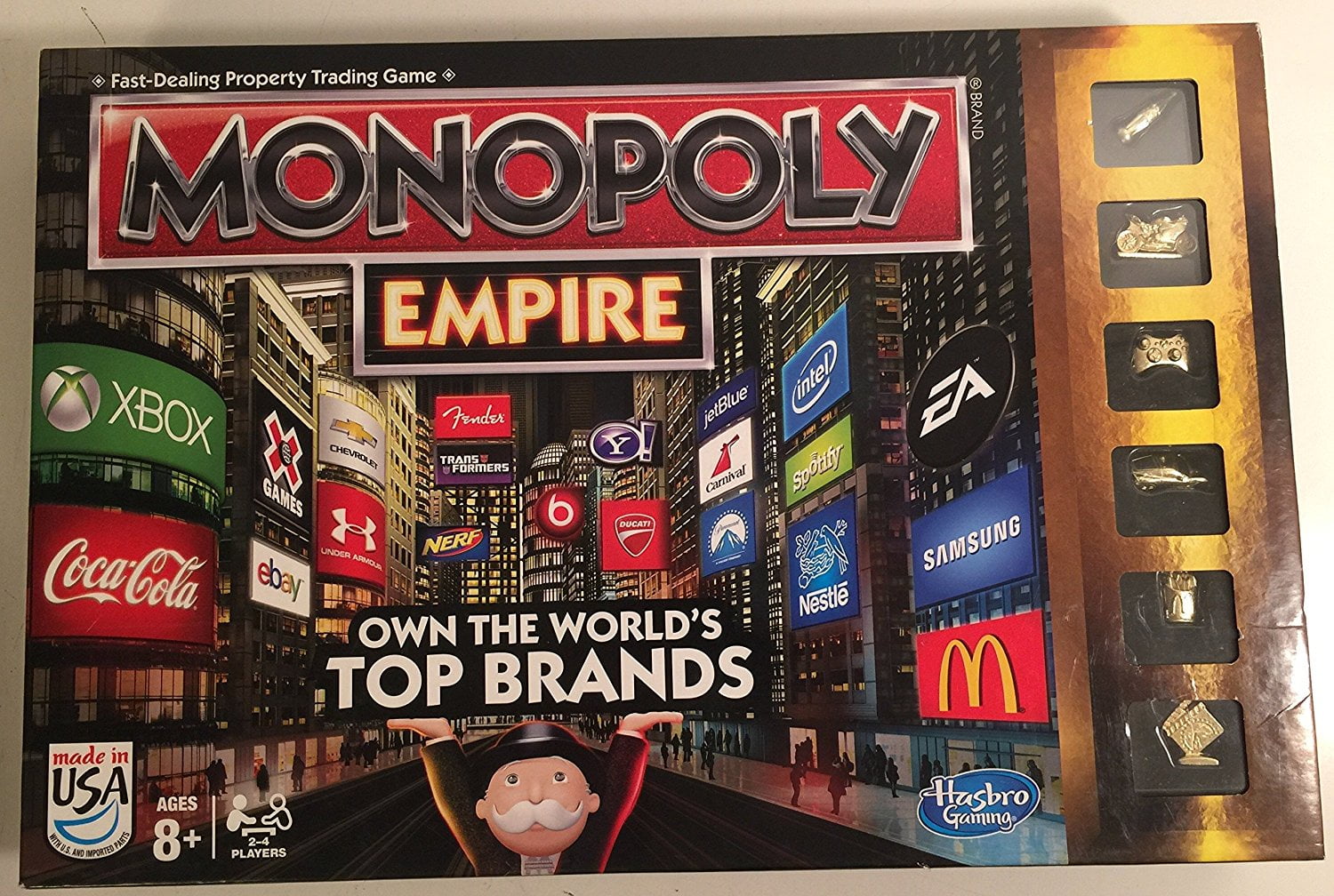

While standard Hasbro Monopoly sets throughout the world contain the traditional pewter tokens, specially commissioned and commemorative sets have used a variety of materials for playing pieces. A picture of the cannon can be seen at the top of the page. Some of these can be seen in the photo above.
#MONOPOLY EMPIRE DRIVER#
Some of these tokens from the 1940s being a car with driver ( counterpart to the race car ) howitzer ( counterpart to the cannon ), airplane, as well as the dog, horse, and rider, and wheelbarrow, but these tokens were officially added in the 1950s. These were the standard pieces until the 1960s when the pewter tokens replaced them.

In 1953, these were replaced by tokens cut from sheet metal, which were fitted with metal stands. In 1948, the United Kingdom sets used cardboard cut-outs in colored bases. In the United Kingdom, some sets used wood pawns from the game "64 Milestones" as tokens, but the majority were cardboard cut-outs slotted into black wooden bases.ĭowst focused on die-cast toys after the war, so Parker Brothers produced its own pewter playing pieces based on the Dowst originals. These playing pieces were fragile, and since not many were produced they became collector's items. A few games had composite playing pieces made of compressed paper and sawdust. The metal was needed for the war effort, so wood pawns were used for most "Monopoly" pieces during that time. These non-tarnishing playing pieces appeared in sets licensed by Parker Brothers throughout the world, although some prewar Canadian sets included generic turned wood pawns of various shapes. Later non-tarnishing tokens were made of lead and tin. Impurities in the manufacturing process caused some of them to oxidize and turn black. The first pieces, from 1935 to about 1938, were made by the Dowst Manufacturing Company, makers of "Tootsietoys." These were die-casts from Zamak, a zinc alloy also known as white metal, monkey metal, pot metal, or die-cast zinc. In late 1935 and early 1936, the lantern and rocking horse were added to 10 token sets, these pieces are especially hard to find nowadays. Later in 1935, the race car purse was added to the 7 token sets and then in about the middle of 1935, the purse was added to 8 token sets.

The originals being a cannon, thimble, top hat, iron, battleship, and boot. Shortages of raw materials during the war years failed to disrupt "Monopoly" production, but components, including playing pieces, were replaced with lower quality alternatives. Players used familiar objects such as buttons and charms for tokens. Prior to this, no playing pieces were supplied with the game. "Monopoly" playing pieces, often referred to as tokens, date from 1935 when Parker Brothers bought the game rights.


 0 kommentar(er)
0 kommentar(er)
